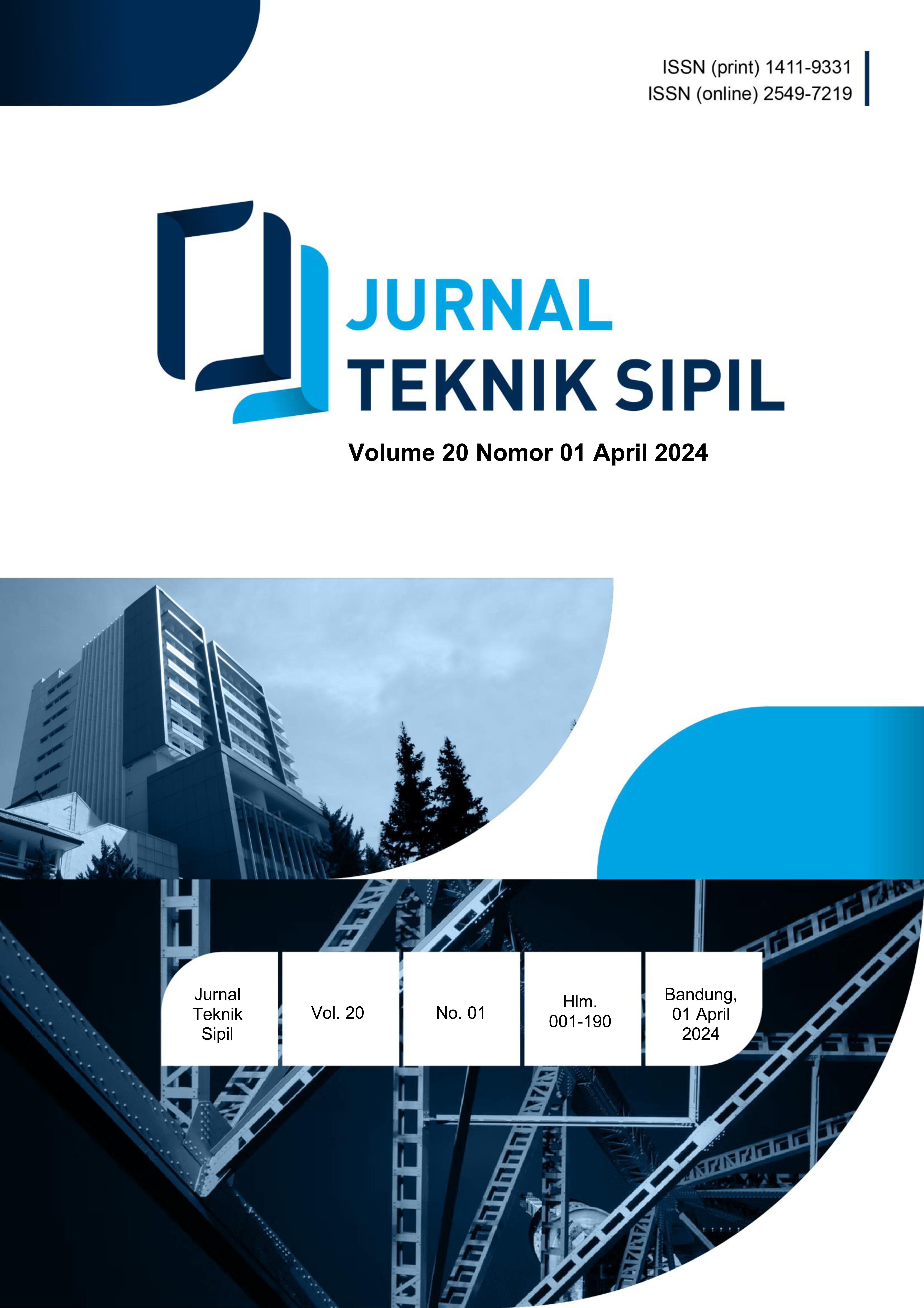Design of Self Compacted Concrete Mix Based on Maximum Compressive Strength and Mortar Flow Using Air Dried Aggregates
DOI:
https://doi.org/10.28932/jts.v20i1.6401Keywords:
compressive strength, fly ash, mix design, rheology, sccAbstract
The use of Self Compacted Concrete (SCC) in construction industry continues to grow. Different levels of work complexity require varying flow rates and SCC compaction capabilities. Mix design for SCC cannot be defined precisely because there are many parameters involved. This study used a stepwise design method by determining maximum fly ash composition for type I cement substitution which produced highest mortar compressive strength. Superplasticizer added to produce flow mortar more than 250 mm. Air-dried Progo Sand (Gradation IV) and air-dried Clereng Gravel size 4.8 mm – 9.6 mm was used. SCC was obtained by adding gravel into mortar using coefficient of 1.4; 1.6 and 1.8 from 1 m3 volume of agregat cavity. Fresh concrete rheological tests include slump flow, v-funnel, L-box and segregation resistance to determine SCC class. The compression test of 3 cubes mortar for each variation was carried out at 3 days while 3 cylinder SCC compression test for each variation was carried out at 3 and 28 days. Cement substitution with 10% fly ash and 1.8% superplasticizer gave flow mortar of 320.65 mm and compressive strength of 22.07 Mpa was chosen as the SCC mortar. SCC using coefficient of 1.8 produces compressive strength of 30.48 MPa.Downloads
References
Antoni dan Sugiarto, H., (2007). “Kompabilitas Antara Super Plasticizer Tipe Polycarboxylate dan Naphthalene dengan Semen Lokal”. Skripsi. Yogyakarta : Universitas Atma Jaya Yogyakarta.
Arthana, (2017). “Pengaruh Penambahan Fly Ash, Pasir Kuarsa, dan Super Plasticizer Viscocrete 110 terhadap Karakteristik Beton Mutu Tinggi”. Skripsi. Yogyakarta : Universitas Islam Indonesia.
Ekaputri, J. J., Shahib Al Bari, M., (2020), “Perbandingan Regulasi Fly Ash sebagai Limbah B3 di Indonesia dan Beberapa Negara”, Media Komunikasi Teknik Sipil, 26(2), 150-162.
EFNARC, (2005). Specification and Guidelines for Self-Compacting Concrete. 99 West Street, Farnham, Surrey GU9 7EN, UK: Association House.
Ouchi, M., Sakai, E., Sugiyama, T., Mitsui, K., Shindo, T., Maekawa, K., Noguchi, T., (2008). Self-Compacting Concrete in Japan. Conference Paper, Keynote Lecture, 8th International Symposium on Utilization of High Strength and High Performance Concrete.
Purwowidiatmoko, A. M., Satyarno, I., Siswanto, M. F., (2017). Perancangan Mix Design Flow Mortar untuk Pembuatan Self Compacting Concrete (SCC) Dengan Fas 0,3. Naskah Publikasi Tesis, Indonesia: Universitas Gadjah Mada.
Theconstructor, Rheology of Concrete – Rheological Parameter of Fresh Concrete, URL: https://theconstructor.org/concrete/rheology-of-concrete/15319/m diakses tanggal 18 Desember 2022
Wulan, S.A., Satyarno, I., Siswanto, M. F., (2018). Mix Design of Self Compacting Concrete Based on Ultra High Compressive Strength Flow Mortar Mix, Journal of the Civil Engineering Forum, 4(1), 91-96.
Downloads
Published
How to Cite
Issue
Section
License
Copyright (c) 2024 Margeritha Agustina Morib, Hironimus Firnius Zai, Ninik Ariyani

This work is licensed under a Creative Commons Attribution-NonCommercial 4.0 International License.
















